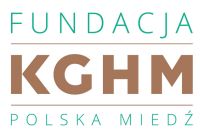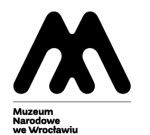Wilhelm von Lindenschmit’s “Entry of Alaric into Rome”,the largest easel painting in the collection of the National Museum in Wrocław,is presented in Książ Castle from 9 July, 2016. The painting was not displayed in public since before the Second Word War
Anniversary of the Opening of the Metamorphoses of Książ Castle Exhibition
Unveiling of “Entry of Alaric into Rome” by Wilhelm von Lindenschmit
Wilhelm von Lindenschmit’s “Entry of Alaric into Rome”, the largest easel painting in the collection of the National Museum in Wrocław, will be presented in Książ Castle beginning in July. It is a valuable addition to the Metamorphoses of Książ Castle exhibition, which opened one year ago. The painting, not displayed in public since before the Second World War, may now be viewed thanks to conservation work that has taken place this year.
“On 8 July, 2016, the National Museum in Wrocław and Książ Castle mark the first anniversary of the opening of the Metamorphoses of Książ Castle exhibition. At this event, we celebrate our common effort and great determination, which has made it possible for numerous paintings to return to the historic interior of the residence of the Hochberg family, the original owners of the works. Over a quarter of a million people have viewed the exhibition, which has become a showcase for the National Museum in Wrocław and one of Książ Castle’s most important attractions. So we recognize that we must carry on, together, with this fruitful work. As the next work from our collection to be presented in Książ Castle, Lindenschmit’s illustrious painting has been chosen because of its unquestioned artistic value, and the opportunity to display it to the public for the first time in several decades. All this time, it has been in storage, rolled up, and has suffered serious damage, but the image now has received professional restoration work and found its proper place, where it may be viewed and admired. It is particularly satisfying for me, as a museologist, not only to have carried out this necessary task but to take such great pleasure in doing so,” said Piotr Oszczanowski, director of the National Museum in Wrocław.
“Entry of Alaric into Rome”, by Wilhelm von Lindenschmit, is one of the largest easel paintings (411 x 613 cm.) in Poland that deals with a historical subject. It portrays a scene associated with the time of the great migrations of peoples.
“It shows the triumphant march of Alaric (c. 370 – 410), pre-eminent leader of the German tribes, who conquered Rome. His breach of the inviolable Eternal City has been viewed as marking the ancient empire’s fall. Alaric, on a black horse, makes an eloquent gesture to stop the barbaric plundering, and escorts a procession of Christians who are taking reliquaries and other liturgical valuables back to the basilica of St. Peter. The painter means to express a vision of a spiritual transformation whereby new religious faith is projected into the future, proving stronger than the weakening power of the gods of antique culture,” explained Beata Lejman, curator of the “Metamorphoses of Książ Castle” exhibition.
The painter, Wilhelm von Lindenschmit (1829-1895), was a graduate and later a professor at the Academy of Fine Arts in Munich, where many Poles also studied: they included Jan Matejko, Maksymilian and Aleksander Gierymski, and Lindenschmit’ own student, Wojciech Kossak.
Begun in 1886, the canvas features the vigour that is characteristic of nineteenth-century historicism. In 1890, the artist sent it to the collection of the Lusatian Hall of Remembrance in Görlitz (now the Zgorzelec Cultural Centre), from which it was taken, in 1956, to the collections of the Silesian Museum in Wrocław, now the National Museum in Wrocław. Because of its huge size it could not be presented, and so it lay in storage for several decades. A year ago Piotr Oszczanowski, director of the National Museum in Wrocław, took the decision to restore the painting and then to present it in Książ Castle. The restoration work, which took place between 2 March and 30 June, 2016, was carried out by the firm REARTE S.C.
”The most significant damage to the painting occurred because the canvas was cut out from its frame, folded in half and rolled up in 1945, which led to the chipping of painting layers, the appearance of plaster in them, and warping and tearing”, explained Beata Lejman. “The restoration of the work began with the cleaning of the face and back, removing chips on paint layers and patches. Following this, the torn and weakened canvas was smoothened, and strengthened with new linen material glued on the back. Chemical and microscopic analysis of samples helped pigments to be identified, and thanks to the technique of Fourier transform infrared spectroscopy, an adhesive was identified as oil paint. Lost grout and paint layers were restored. Finally, a varnish was applied which made the composition clearer, gave it depth and brought out the details of the presentation and subtle colour tones. After the painting was stretched on a specially built self-expanding loom, it was attached to a wall on a frame constructed in Książ and the picture was set into it.”
Lindenschmit’s work enriches the Metamorphoses of Książ Castle exhibition, which opened last year, featuring 38 paintings and two sculptures from the National Museum in Wrocław. Among the displayed works are ten paintings from the collection of Hans Heinrich XV von Hochberg and his wife, Princess Daisy; four Baroque portraits of members of various branches of the Hochberg dynasty; and other works typical of those which used to embellish the castle interior. Over the year, over 247 thousand people have visited the Metamorphoses of Książ Castle exhibition.
The restoration of the painting was sponsored by the KGHM Polish Copper Foundation.
Media patrons:















